What Is Healthcare Waste?
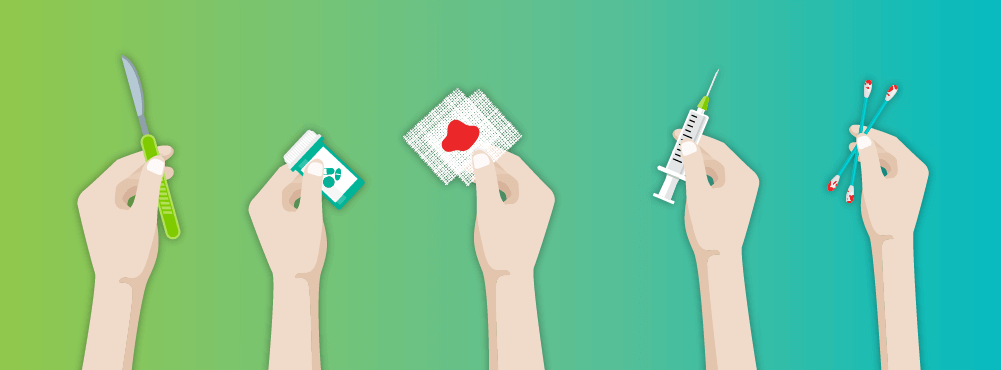
Editor’s note: This post was originally published in August 2023 and has been completely revamped and updated for accuracy and comprehensiveness.
Healthcare waste and clinical waste are the same thing, right? Anyway, isn’t all hospital waste just called medical waste?
Unsurprisingly, there’s a lot of confusion around waste terminology within the healthcare industry, and in the age of compliance, this won’t wash…
Let’s clear things up with a simple guide to healthcare waste, the many types and some best practices for its safe and sustainable management. We’ll also link out to more in-depth guides for each waste stream we cover. Don’t forget to bookmark this guide to easily return if you end up down a waste-filled rabbit hole.
TOPICS WE WILL COVER:
2 / What Is Included in Healthcare Waste?
3 / Classification of Healthcare Waste
4 / Healthcare Waste Management Best Practices
5/ Healthcare Waste Regulations
6 / Healthcare Waste Compliance with Sharpsmart
What Is Healthcare Waste?
Healthcare waste refers to any waste material generated within healthcare facilities such as hospitals, clinics, vets, and medical labs during human or animal healthcare, or related research activities. It’s a broad term that covers all waste generated within the healthcare environment. Healthcare waste includes clinical waste, it also includes non-clinical wastes such as offensive waste, domestic waste, recyclable waste, food waste, etc.
What’s the Difference Between Healthcare Waste and Clinical Waste?
Clinical waste is a specific category within healthcare waste that encompasses any type of waste generated in a medical, veterinary, treatment, research, or other practice where the waste poses a risk of infection or hazard, or can otherwise cause harm or illness to a person coming into contact with it.
In summary: Not all waste generated within the healthcare environment is clinical waste, but it is all healthcare waste. The term ‘medical waste’ can be used interchangeably with the term ‘healthcare waste’.
What Is Included in Healthcare Waste?
As noted: any waste material generated within a healthcare facility or as a result of a healthcare-related activity.
We won’t define every single healthcare waste stream here, you can always refer to the Health Technical Memorandum (HTM) 07-01 for that, but the most common healthcare waste types are:
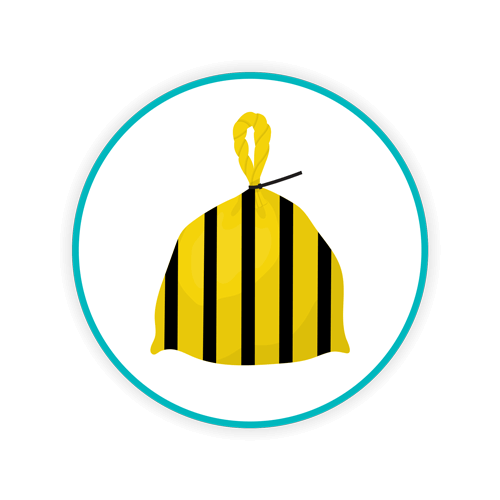 Offensive waste – recognisable, non-hazardous, non-infectious waste that may contain body fluids (secretions or excretions) and may have an unpleasant odour and appearance. Offensive waste includes items such as PPE, nappies, and incontinence pads.
Offensive waste – recognisable, non-hazardous, non-infectious waste that may contain body fluids (secretions or excretions) and may have an unpleasant odour and appearance. Offensive waste includes items such as PPE, nappies, and incontinence pads.
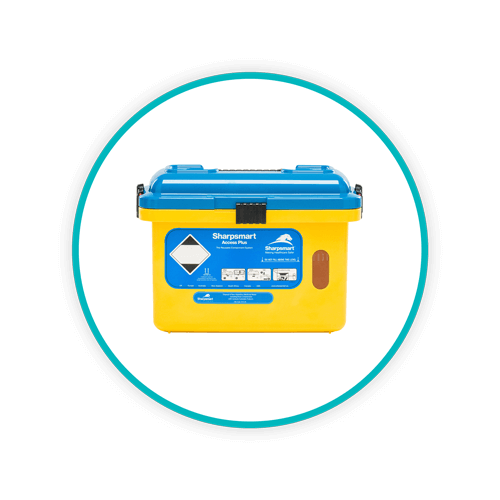 Pharmaceutical waste – Any non-hazardous medicines such as tablets, capsules, liquid suspensions, and powders.
Pharmaceutical waste – Any non-hazardous medicines such as tablets, capsules, liquid suspensions, and powders.
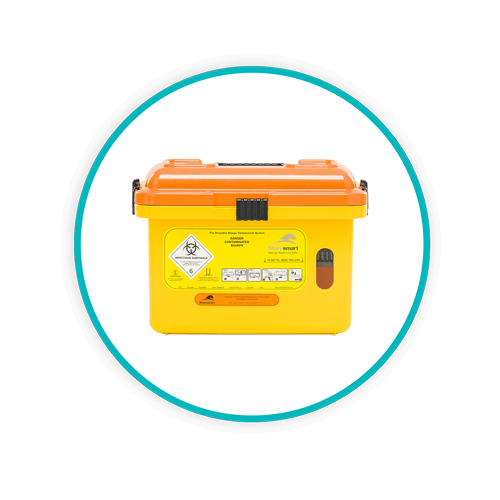 Sharps waste – any sharp item that could potentially cut or puncture skin including syringes, single-use metal items, and end-of-life surgical instruments. The presence of infectious organisms, chemical contamination, or a cytotoxic or cytostatic drug determines whether a sharp is hazardous. Sharps may also contain pharmaceutical residues.
Sharps waste – any sharp item that could potentially cut or puncture skin including syringes, single-use metal items, and end-of-life surgical instruments. The presence of infectious organisms, chemical contamination, or a cytotoxic or cytostatic drug determines whether a sharp is hazardous. Sharps may also contain pharmaceutical residues.
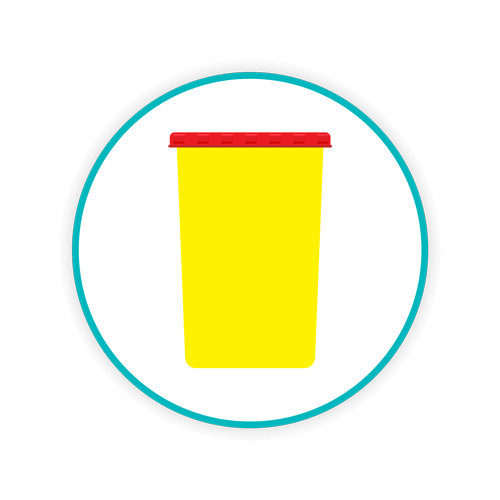 Anatomical waste – any identifiable human parts including limbs, organs, and placentas as well as full or partially used blood bags. Also includes pathological and biopsy specimens. Anatomical waste isn’t necessarily hazardous unless it’s infectious or chemically contaminated.
Anatomical waste – any identifiable human parts including limbs, organs, and placentas as well as full or partially used blood bags. Also includes pathological and biopsy specimens. Anatomical waste isn’t necessarily hazardous unless it’s infectious or chemically contaminated.
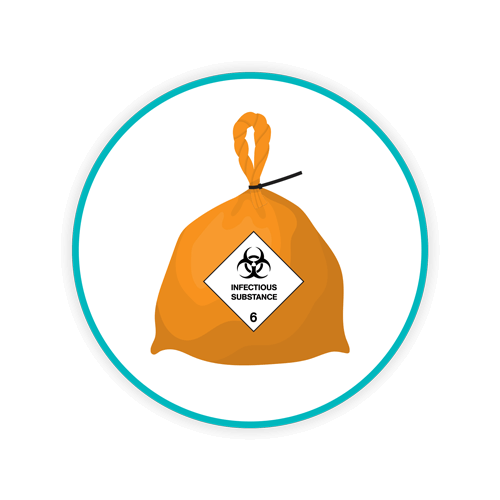 Infectious waste for alternative treatment – waste such as PPE, dressings, and IV tubings that have come into contact with infectious bodily fluids and isn’t medicinally or chemically contaminated. This also includes waste generated from a patient diagnosed with any type of communicable disease.
Infectious waste for alternative treatment – waste such as PPE, dressings, and IV tubings that have come into contact with infectious bodily fluids and isn’t medicinally or chemically contaminated. This also includes waste generated from a patient diagnosed with any type of communicable disease.
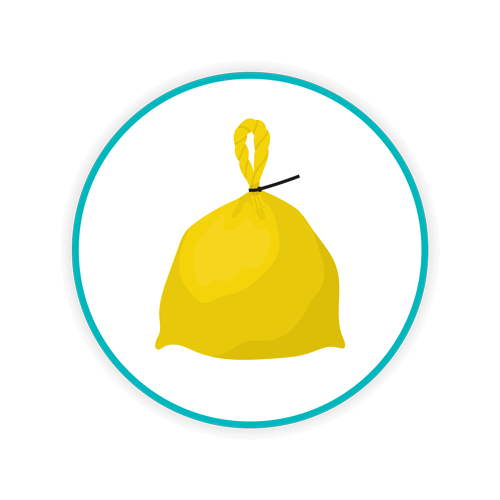 Infectious waste for incineration – waste classified as being highly infectious due to a secondary contamination such as medicinal or chemical.
Infectious waste for incineration – waste classified as being highly infectious due to a secondary contamination such as medicinal or chemical.
Cytotoxic or Cytostatic waste – the most dangerous drugs used in healthcare and includes cytotoxic or cytostatic drugs and any materials contaminated with them. These drugs contain one or more hazardous properties including acute toxicity, carcinogenic, toxic for reproduction, or mutagenic.
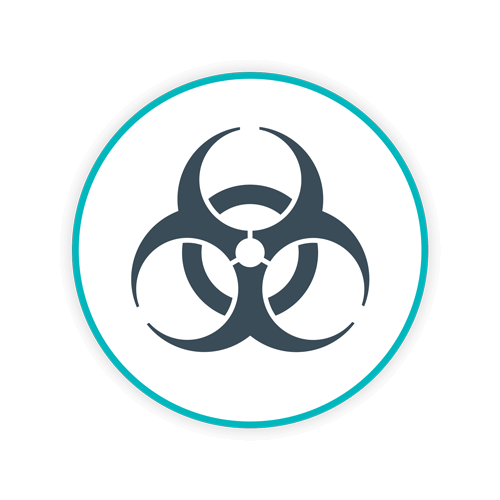 Radioactive waste – is waste contaminated with low-level radioisotopes and typically only occurs in specific areas within a healthcare facility such as nuclear medicine departments, labs, operating theatres, and areas using X-ray equipment. Common radioactive healthcare wastes include syringes and needles, PPE, and other disposable equipment used in nuclear medicine procedures.
Radioactive waste – is waste contaminated with low-level radioisotopes and typically only occurs in specific areas within a healthcare facility such as nuclear medicine departments, labs, operating theatres, and areas using X-ray equipment. Common radioactive healthcare wastes include syringes and needles, PPE, and other disposable equipment used in nuclear medicine procedures.
Other common healthcare waste streams include domestic/general, recyclable, and confidential waste. If you’d like a deeper dive into some of these waste streams plus a more in-depth definition of clinical waste, see our blog: What Is Clinical Waste?
Are All Healthcare Waste Bins Equal?
The type of bin for your healthcare waste will differ depending on the waste you’re disposing of. To be compliant and segregate correctly, you’ll need to adhere to the hospital waste colour-coding system.
Classification of Healthcare Waste 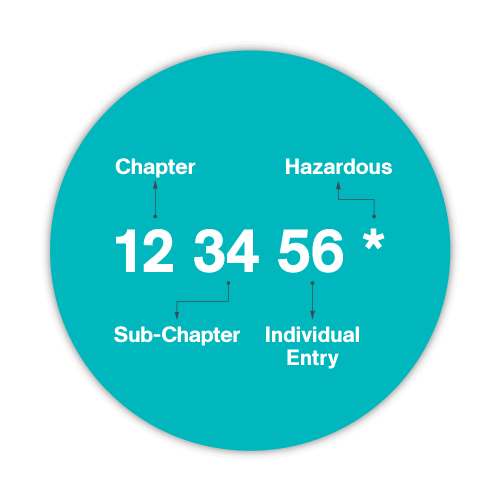
Correct waste classification is crucial for compliance and the safety of staff, patients and visitors. To classify waste accurately you need to consider its specific characteristics – it’s best practice to make this assessment at the point of generation.
Some questions you can ask when assessing your healthcare waste are:
- Is it clinical waste?
- Is it hazardous?
- Is it a medicine, or does it contain a pharmaceutically active medicine?
- Does the waste contain cytotoxic or cytostatic medicinal waste?
- Does it contain any other chemicals?
- Is it infectious?
- Does it contain recognisable human tissue?
- Is it radioactive?
What if the answer to all of those questions is a resounding no? If that’s the case and your waste is non-hazardous, all you need to do is assess whether it’s offensive, domestic, recyclable, or confidential waste.
Once you’ve assessed your waste for disposal, you’ll then need to classify it using the correct healthcare waste EWC code.
Need help with waste classification?
Healthcare Waste Management Best Practices
To streamline waste management within your workplace, consider these best practices for healthcare waste management:
- Optimise container placement: Ensure the right containers are in the optimal locations for the volumes of waste you’re generating.
- Segregate your waste: Dispose of waste into the correct bins to facilitate compliance and the most sustainable treatment.
- Label accurately: Clearly label each waste bag or container to ensure proper handling and enable traceability. This usually involves the use of pre-numbered tags or pre-printed stickers.
- Maintain accurate segregation during storage: Adhere to waste segregation protocols even when waste is stored in the waste hold to prevent contamination and non-compliance issues.
- Partner with reputable experts: Collaborate with certified and credible waste disposal service providers to guarantee responsible waste management.
- Prioritise waste reduction: Implement strategies to minimise waste and promote sustainable practices by moving the waste you produce up the waste hierarchy into more favourable positions.
- Enhance clarity with effective signage: Use clear and concise signage that’s easy to understand without needing to spend a lunch break reading it to guide staff and visitors towards proper disposal.
By adopting these best practices, you can significantly improve your facility’s efficiency and environmental impact.
Healthcare Waste Regulations 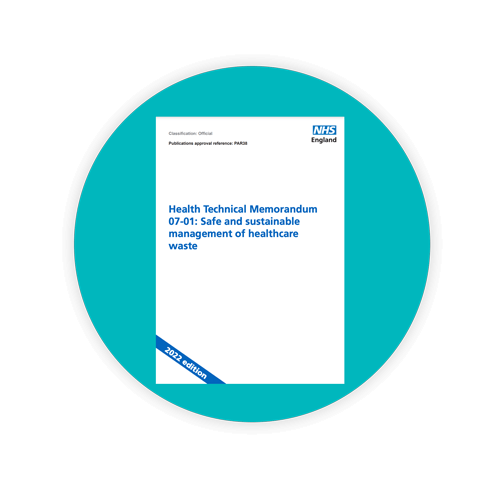
When it comes to healthcare waste regulations and understanding the requirements for compliance, the Health Technical Memorandum (HTM) 07-01: The Safe and Sustainable Management of Healthcare Waste is your most valuable resource. This document provides detailed technical guidance, information on classifying and handling different healthcare waste streams, and more.
By understanding and following the guidance offered by the HTM 07-01, you’ll be meeting legislative requirements, encouraging safer working practices, and significantly reducing your environmental impact – saving money as a result.
In 2023, the guidance had its first major update in 10 years, aligning it with the NHS Clinical Waste Strategy and route to Net Zero with an added emphasis on sustainability. If it’s too long of a read for you right now, you could always see our summary of the HTM 07-01 for a brief overview of the key changes.
It’s important to remember that regulations aren’t in place to act as a barrier to healthcare. They’re put in place to ensure a safer workplace, protect public health and the environment, and help you avoid legal consequences.
Healthcare Waste Compliance with Sharpsmart 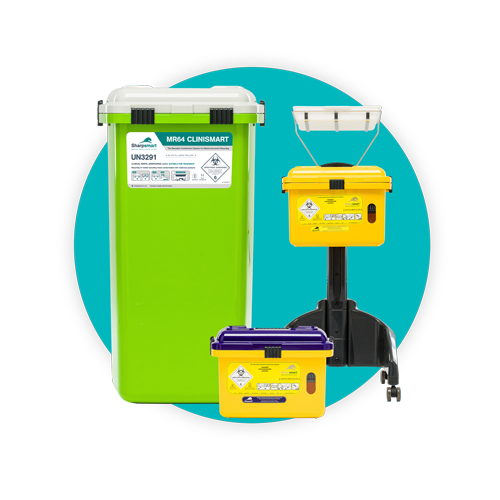
Understanding the complexities of healthcare waste is essential for both safety and compliance. This is where Sharpsmart steps in, offering expert solutions for safe and sustainable healthcare waste disposal.
With over 20 years of experience working within the four walls of healthcare organisations across the UK, we help to upskill healthcare workers with education and training that makes waste management best practices second nature.
Don’t leave the safety of your staff, patients, or the environment to chance. Partner with Sharpsmart to ensure that your healthcare waste is handled with the utmost care and compliance. Our experienced team is ready to support you every step of the way, from identifying and segregating waste to final disposal.
Contact us today to learn more about our healthcare waste services and how we can help you create a safer and more compliant waste management system for your facility.
Let's Talk!
Your time is valuable, and we don’t want to play hard to get. You can either phone us directly on the details listed on our contact page, or feel free to fill out this short form and one of our team members will get back to you as quickly as possible.
